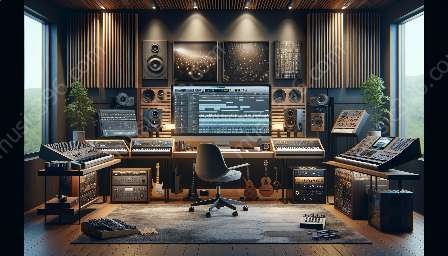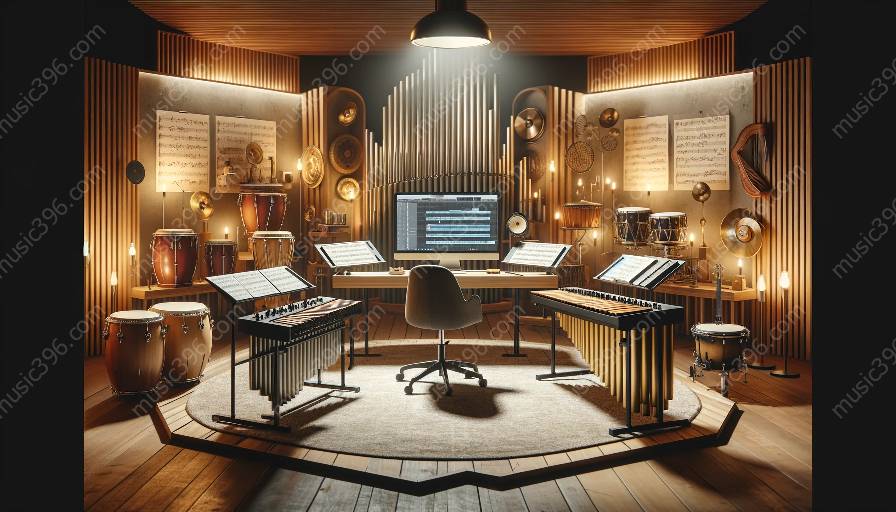Notating percussion music presents unique challenges due to the diverse range of percussion instruments and the complexity of rhythms. The effective notation of percussive elements is crucial for accurately conveying the intention of the composer and helping performers to interpret the music correctly. This topic cluster explores the challenges in notating percussion music, its relevance to writing music for percussion, and its impact on music composition.
Understanding the Complexity of Percussion Instruments
Percussion instruments encompass a wide array of sound-producing objects, each with its unique timbre, range, and playing techniques. From simple drums to intricate mallet instruments and exotic world percussion, the diversity of percussion instruments poses a challenge in accurately representing their sounds on paper.
Accurate notation requires a deep understanding of each instrument's characteristics, including their pitch range, dynamics, and timbral variations. Percussion notation must consider the use of different mallets, striking techniques, and the potential for extended techniques, such as bowing, scraping, or muting, depending on the instrument.
Notating unpitched percussion instruments like cymbals, tambourines, and woodblocks, which lack defined pitches, also requires specialized symbols and notation techniques to convey the desired sound and rhythm accurately.
Complex Rhythmic Notation
Rhythm is fundamental to percussion music, and accurately notating complex rhythmic patterns is essential. Challenges arise from the intricate interplay of rhythms between various percussion instruments and their interaction with other instrumental parts. Effective rhythmic notation must account for syncopations, polyrhythms, cross-rhythms, and polymeters commonly found in percussion music.
Furthermore, percussionists often perform multiple rhythmic layers simultaneously, requiring clear and unambiguous notation to differentiate between different rhythmic elements. The effective use of rests, ties, and other rhythmic symbols becomes essential to convey the intended rhythm accurately.
Utilizing Notation Systems for Percussion
Several notation systems exist for percussion music, each with its own conventions and symbols. Common systems include the use of standard staff notation, percussion tablature, graphic notation, and various contemporary notation approaches.
Translating the intricate rhythms and timbres of percussion instruments onto traditional staff notation can be challenging, potentially leading to ambiguities and misinterpretations by performers. As a result, composers and arrangers often resort to creating custom percussion notation or incorporating non-standard symbols to better represent the timbral and performance nuances of percussion instruments.
Moreover, composers may also employ graphic notation to convey concepts that are difficult to express using traditional notation, offering greater flexibility in representing percussive sounds and extended techniques.
Tying Notation to Performance Considerations
Accurate notation is integral to the successful performance of percussion music. Notational clarity directly impacts how percussionists interpret and execute the music. Composers and arrangers must consider performance aspects such as stickings, hand placement, mallet choices, and instrument changes, effectively integrating these considerations into the notation to facilitate optimal performance.
Moreover, the layout and organization of percussion scores, including part extraction, page turns, and visual cues, significantly influence the practicality of performance. Thoughtful notation helps streamline the learning process for performers and contributes to the overall effectiveness of rehearsals and live performances.
Writing Music for Percussion
Understanding the challenges in notating percussion music is crucial for composers and arrangers writing music for percussion. By comprehensively grasping the complexities of percussion instruments and rhythmic notation, composers can create scores that effectively communicate their artistic vision while remaining practical for performers.
Moreover, considering the vast stylistic diversity within percussion music, from orchestral and chamber ensembles to contemporary and world percussion, composers must adapt their notation to cater to the specific idioms and performance practices of different percussion traditions.
Impact on Music Composition
Notation significantly influences the compositional process, especially in a genre as rhythmically diverse as percussion music. Composers often draw inspiration from percussion instruments and their inherently rhythmic nature, integrating percussive elements into their compositions in innovative ways.
Understanding the complexities of notating percussion music allows composers to explore unconventional rhythmic structures, experimental techniques, and extended notational approaches, broadening the sonic and expressive possibilities within their compositions.
Conclusion
Notating percussion music presents a myriad of challenges, encompassing the diverse nature of percussion instruments, complex rhythmic patterns, and the utilization of various notation systems. Comprehensively addressing these challenges is essential for composers, arrangers, and performers to effectively communicate and realize percussive compositions. By understanding the intricacies of notating percussion music and its intersection with writing and composing for percussion, the artistic potential of percussive music can be fully realized.




























